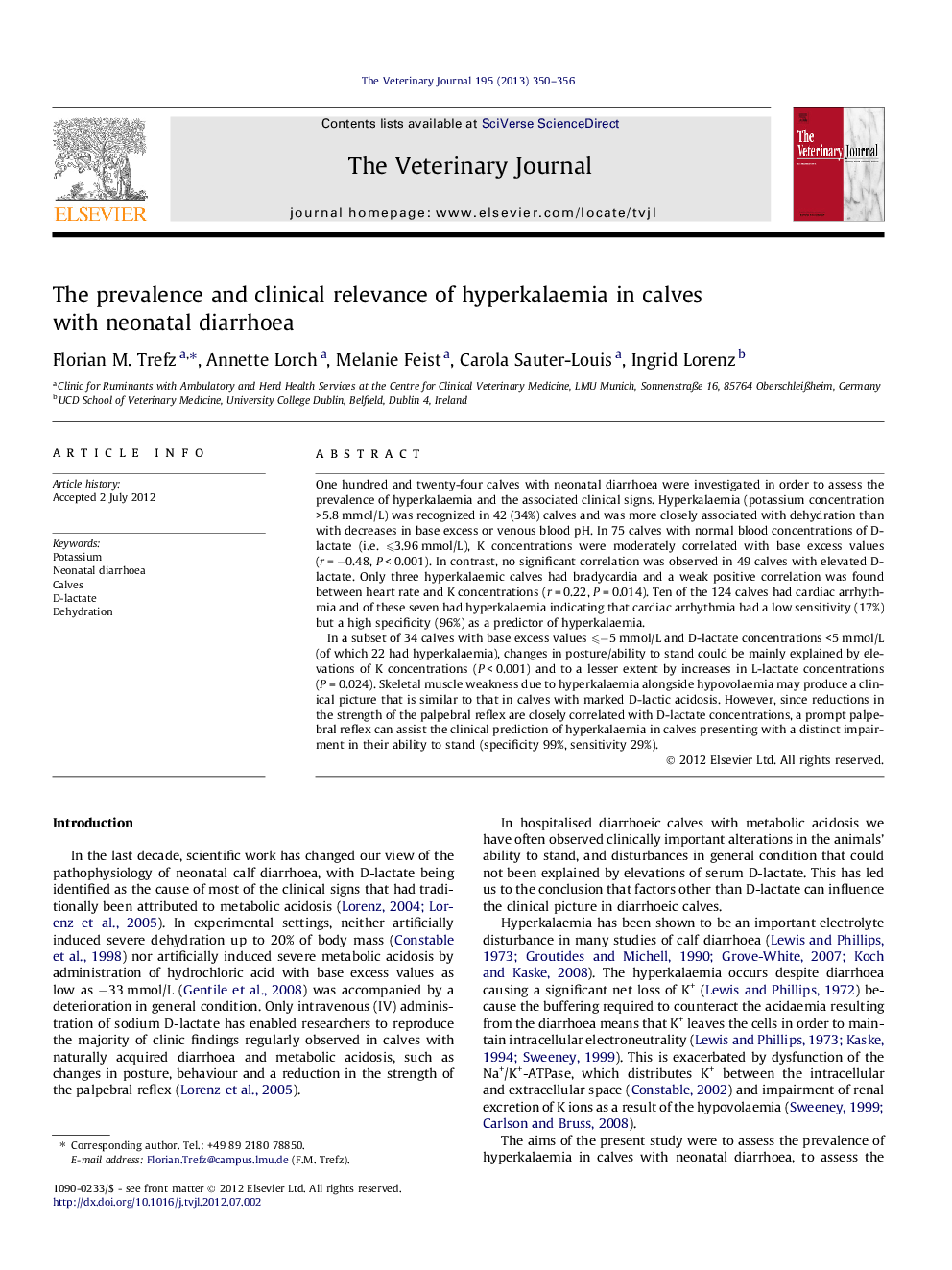| کد مقاله | کد نشریه | سال انتشار | مقاله انگلیسی | نسخه تمام متن |
|---|---|---|---|---|
| 5798809 | 1111781 | 2013 | 7 صفحه PDF | دانلود رایگان |
One hundred and twenty-four calves with neonatal diarrhoea were investigated in order to assess the prevalence of hyperkalaemia and the associated clinical signs. Hyperkalaemia (potassium concentration >5.8 mmol/L) was recognized in 42 (34%) calves and was more closely associated with dehydration than with decreases in base excess or venous blood pH. In 75 calves with normal blood concentrations of D-lactate (i.e. ⩽3.96 mmol/L), K concentrations were moderately correlated with base excess values (r = â0.48, P < 0.001). In contrast, no significant correlation was observed in 49 calves with elevated D-lactate. Only three hyperkalaemic calves had bradycardia and a weak positive correlation was found between heart rate and K concentrations (r = 0.22, P = 0.014). Ten of the 124 calves had cardiac arrhythmia and of these seven had hyperkalaemia indicating that cardiac arrhythmia had a low sensitivity (17%) but a high specificity (96%) as a predictor of hyperkalaemia.In a subset of 34 calves with base excess values ⩽â5 mmol/L and D-lactate concentrations <5 mmol/L (of which 22 had hyperkalaemia), changes in posture/ability to stand could be mainly explained by elevations of K concentrations (P < 0.001) and to a lesser extent by increases in L-lactate concentrations (P = 0.024). Skeletal muscle weakness due to hyperkalaemia alongside hypovolaemia may produce a clinical picture that is similar to that in calves with marked D-lactic acidosis. However, since reductions in the strength of the palpebral reflex are closely correlated with D-lactate concentrations, a prompt palpebral reflex can assist the clinical prediction of hyperkalaemia in calves presenting with a distinct impairment in their ability to stand (specificity 99%, sensitivity 29%).
Journal: The Veterinary Journal - Volume 195, Issue 3, March 2013, Pages 350-356
